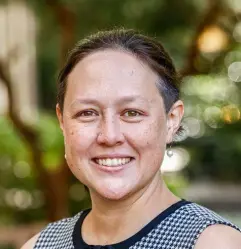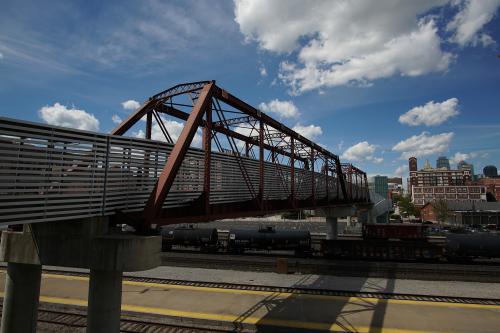This is the appendix for the “In the age of American ‘megaregions,’ we must rethink governance across jurisdictions“ research brief.
How mega is my region?
In terms of formal statistical boundaries, the closest thing the U.S. has for defining regions are metropolitan statistical areas (MSAs), although in most cases they do not correspond to existing governance structures or practices. The Office of Management and Budget (OMB) uses employment interchange to define MSA administrative boundaries around “core” counties. But in a polycentric world, regions now have multiple cores and adjacent regions that are increasingly interdependent. Hypothetically, if employment interchange between two MSAs ever reached a threshold of 25% or more of workers, OMB would merge them.
The first new megaregion to emerge this century is a familiar face: North Carolina’s Durham-Chapel Hill and Raleigh-Cary MSAs, which were historically one MSA until the new MSA criteria in 2000. Employment flow from Raleigh-Cary, the larger MSA by population, to Durham-Chapel Hill (home of Research Triangle Park, Duke University, and the University of North Carolina at Chapel Hill), increased from 20% in 2002 to 28% in 2017. In absolute numbers, the ~75,000 workers that commute from Wake County (the core county of the Raleigh MSA) to Durham-Chapel Hill compose 25% of the latter MSA’s workforce (as shown in the map below). These two MSAs will be merged pending confirmation from the American Community Survey and the 2020 census, when the OMB next updates MSA definitions (assuming the standard does not change).

This growth in flow between the two metro areas is the combined result of many distinct planning decisions, including siting Research Triangle Park—a major jobs center—to straddle the borders of the two MSAs, but with three-quarters of the Park’s area in Durham County. Conversely, most of the region’s extremely rapid housing and population growth is in the “boomburbs” of the Raleigh MSA, led by Cary. Thus, two regions that were already interconnected by lower-level commuting flows, cultural connections, and a shared airport have increasingly become one interdependent region for housing and labor. This is very similar to how the Dallas and Fort Worth, Texas areas became one region. MSA definitions aside, residents in the Raleigh-Durham-Chapel Hill area have identified themselves as one region for a long time now: the Research Triangle. That identity has yet to be reflected in statistical areas and governance practices, which impedes capacity for stakeholders in the region to coordinate and tackle issues of regional significance.
Other clusters of MSAs are also forming megaregions. However, most of them do not meet the current OMB standard for merging into one MSA. In some cases, employment interchange within a network of multiple MSAs exceeds 25%, but no single MSA is so interdependent on another as to meet this threshold. The 41 MSAs that import at least 25% of their workers are shown in the table below.

Of this group, the other emerging megaregion that will likely meet the OMB standard soon is in California: the San Francisco-Oakland-Hayward MSA and the San Jose-Sunnyvale-Santa Clara MSA. As of 2017, the MSA containing San Jose already draws 22.6% of its workers from the San Francisco-Oakland MSA. If this trend continues, eventually these two MSAs will be merged by OMB.
There are now 30 MSAs that export at least 25% of their working population, shown in the table below. These data show three more established megaregions:
- The Oxnard-Thousand Oaks-Ventura and Riverside-San Bernardino-Ontario MSAs are eligible to merge into the Los Angeles-Long Beach-Anaheim, Calif. MSA.
- The Ogden-Clearfield and Provo-Orem MSAs will likely join the Salt Lake City, Utah MSA.
- Worcester, MA-CT will join Boston-Cambridge-Newton, MA-NH
In Ohio, Akron and Cleveland are also very close to the threshold, and in Florida, workers from Lakeland-Winter Haven and Deltona-Daytona Beach-Ormond Beach are increasingly commuting to Orlando-Kissimmee-Sanford.

Nationwide, OMB has identified 10 combined statistical areas (CSAs) that contain at least two MSAs. CSAs use a much more relaxed employment interchange threshold (a combined two-way flow totaling at least 15%, while the MSA requirement is 25% one way). Most of the nation’s 174 CSAs consist of collections of micropolitan areas, or one metro area and surrounding micropolitan areas. However, there are 10 emerging megaregions that contain two or more MSAs.




